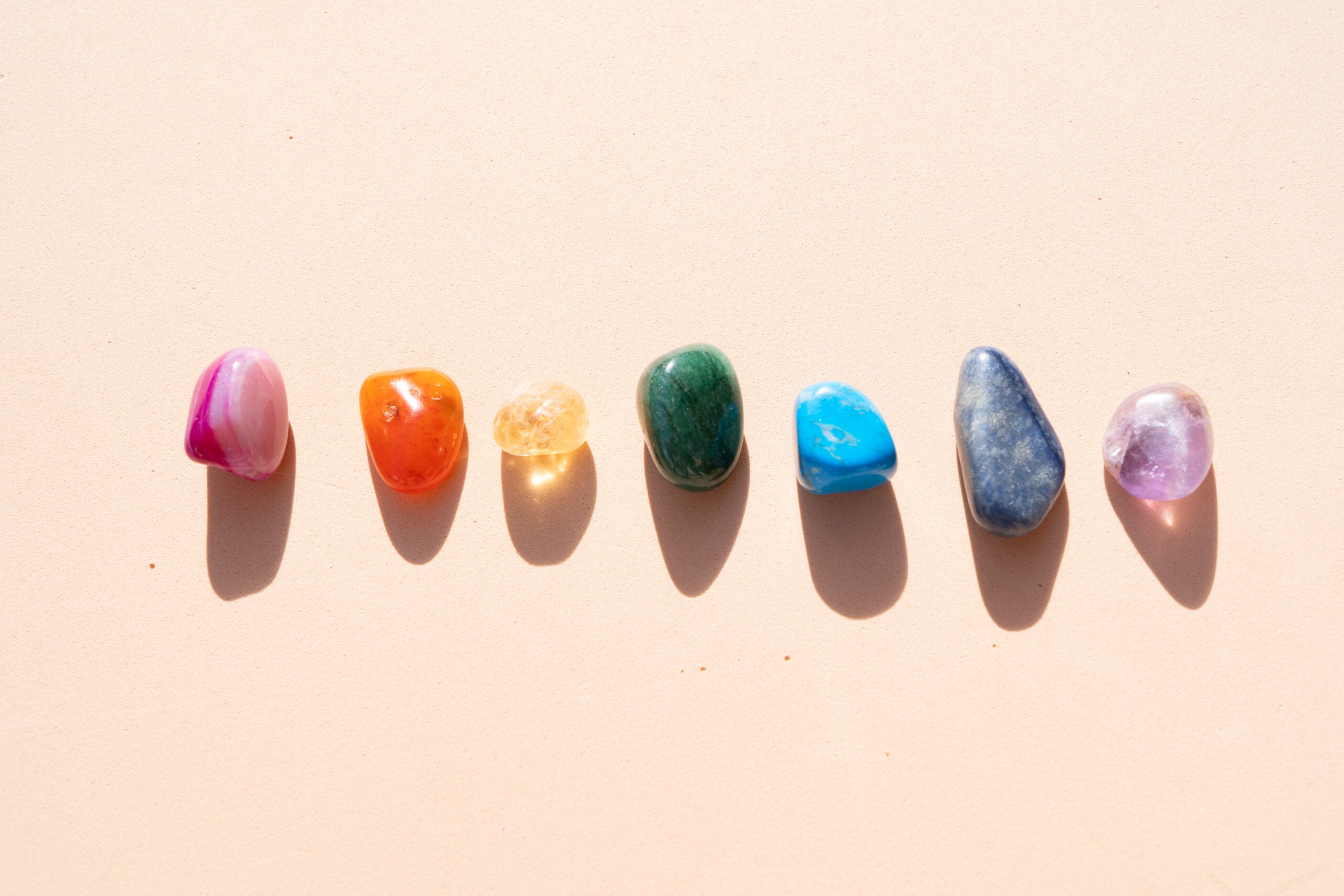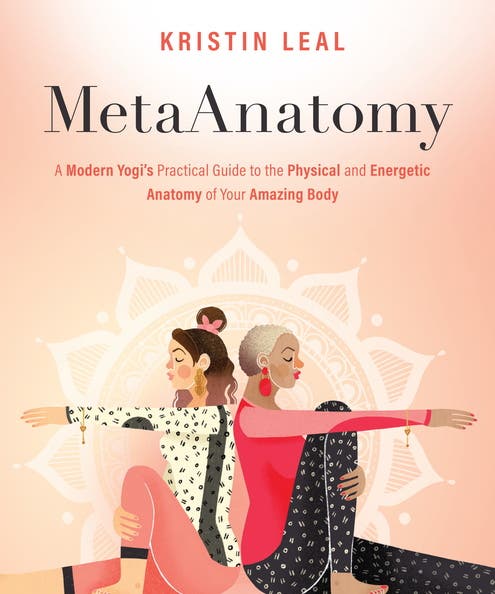Wake Up Your Chakras With This Bija Mantra Meditation

(Photo: neirfy/iStock/Getty Images)
While the word chakra, often translated at “wheel” or “circle,” can be found in the Vedas (which date from 1000 to 1500 BCE), these embodied psychic energy centers arguably didn’t get defined until the eighth century CE, when a few Buddhist texts describe a three-chakra system. The notion of a chakra system really gains steam a few hundred years later, in the age of hatha yoga and Tantra.
Depending on the text, a variety of different numbers of chakras are given. I have had teachers who have referred to hundreds of chakras in the body, explaining that each and every joint is a chakra. Most commonly today teachers illuminate and refer to the seven main chakras that can be found or experienced along our central channel, or Sushumna Nadi.
The chakras are correlated with the five elements, which will then have a correlation to a bija mantra (seed sound), which was originally used in a practice called nyasa. From the word meaning “to place,” nyasa involved visualizing sounds and shapes and mentally placing them at different centers of the body. Perhaps you can think of each chakra as being like a special folder on your computer and the mantras as different ways to double click on that folder in order to open up the multitudes of information that it holds.
For this bija mantra chakra meditation, choose a comfortable seated position that you can sustain fairly easily for 15 minutes.
As you are ready, close your eyes and begin moving your attention inward. With teeny-tiny micro-movements, begin to sway your spine ever so slightly to the right and to the left, negotiating your way slowly to what feels like neutral. Strike the regal balance of the crown of your head over the base of your spine and allow the curvy architecture of the spine to support you as the outer body begins to soften and relax.
See also: A Beginner’s Guide to the Chakras
LAM: Muladhara (root) chakra
Let your attention settle now at the base of your spine. In this region of muladhara chakra, feel for a moment the earthy grounding and stability of the seat and legs on the padding or floor below you. Audibly make the first sound of the bija mantra LAM—the L sound—a few times, feeling as if it could emanate from the region right in front of the tailbone and above the pelvic floor. Then chant the whole mantra LAM a few times, feeling the sound ripple out from this area. Sit for a few moments and silently feel the mantra LAM at the base.
VAM: Svadhisthana (sacral) chakra
Lift your awareness a bit higher to the area in front of your sacrum, behind your lower belly, and feel the watery quality of your pelvic bowl. If it helps you to connect to this region, rock the pelvis a little forward and backward. Find stillness and audibly make the first sound of the bija mantra VAM—the V sound—as if it could emanate from the region in front of your sacrum. Then chant the whole mantra VAM a few times, feeling the sound ripple out from this area. Sit for a few moments and silently feel the mantra VAM in this region.
RAM: Manipura (solar plexus) chakra
Slide the awareness higher, into the navel center. Feel the soft curve of the lumbar spine and belly and perhaps the fiery quality of the abdomen and digestive organs. Audibly make the first sound of the bija mantra RAM—the R sound—as if it could emanate from this space. Then chant the whole mantra RAM a few times, feeling the sound ripple out from this area. Sit for a few moments and silently feel the mantra RAM in this region.
YAM: Anahata (heart) chakra
Draw the attention higher, into the heart center snuggled between your lungs in front of the thoracic spine. Feel the airy quality of the breath in the lungs. Audibly chant the first sound of the bija mantra YAM—the Y sound—as if it could emanate from this space. Then chant the whole mantra YAM a few times, feeling the sound ripple out from this area. Sit for a few moments and silently feel the mantra YAM in this region.
HAM: Vishuddha (throat) chakra
Let your attention rise to the relaxed throat. Feel the gentle curve of the cervical spine and the quiet slide of breath in the passage of the spacious throat. Audibly chant the first sound of the bija mantra HAM—the hard H sound—as if it could emanate from this space. Then chant the whole mantra HAM a few times, feeling the sound ripple out from this area. Sit for a few moments and silently feel the mantra HAM in this region.
KSHAM: Ajna (third eye) chakra
Soften your jaw and feel as if you could let the upper palate lift and broaden. Relax the little strip of real estate between your eyebrows and allow the awareness to move into the middle of the brain. Audibly but very quietly chant the first sound of the bija mantra KSHAM—the K sound—as if it could emanate from this space. Now chant the whole mantra KSHAM a few times, letting the sound ripple out from the area in the middle of the brain. Sit for a few moments and silently feel the mantra KSHAM in this region.
OM: Sahasrara (crown) chakra
By surrendering your effort, the attention will be drawn toward the crown of your head. Feel as if the two hemispheres of your brain could sit a little more heavily and the skull plates themselves could relax a bit of their grip. Here you can feel the silent sound of OM vibrating at the crown. Your mind may grow quiet, and you can let go of any technique and just sit in this place of no-thing. If the mind gets busy, you can return back to the awareness of the vibration or silent sound of OM at the crown.
Continue sitting for as long as you would like. When you are ready to come out of the meditation, rub the palms together in front of your heart, creating some heat in the hands. Keeping the eyes closed, place the warm, cupped palms over your eyes and slowly drag the hands down the face, neck, and throat and then down the body. Take your time to allow the awareness to climb back down the spine. Run the hands down each leg and massage the calves, feet, and toes to help ground your energy. Bow the head and flutter the eyes open, taking a hazy gaze at one point on the floor in front of you.
Before you let your awareness move out into the world, take a few minutes to contemplate or journal about your experience of the bija mantra chakra meditation.

Excerpted from MetaAnatomy: A Modern Yogi’s Practical Guide to the Physical and Energetic Anatomy of Your Amazing Body by Kristin Leal. Copyright © 2021 Kristin Leal. To be published by Sounds True on July 27, 2021.
About the author
Kristin Leal is a 500 E-RYT yoga teacher and a sadhaka (follower) in the ISHTA lineage, as well as a licensed massage therapist, Reiki practitioner, and author. For information about her MetaAnatomy workshops, classes, and online trainings visit kristinleal.com.
Want to know more about chakras?
Read: A Beginners Guide to the Chakras
Try: Inclusivity Training: Align Your Heart Chakra with This Chest-Opening Sequence
Practice: Hone Your Intuition: 12 Poses to Activate Your Third-Eye Chakra
Want to deepen your yoga practice? Join Outside+ and get unlimited access to exclusive articles, sequences, meditations, and live experiences—as well as thousands of healthy recipes and meal plans from Clean Eating and Vegetarian Times, plus can’t-miss content from more than 35 other brands, like Women’s Running, Backpacker, and Better Nutrition.
